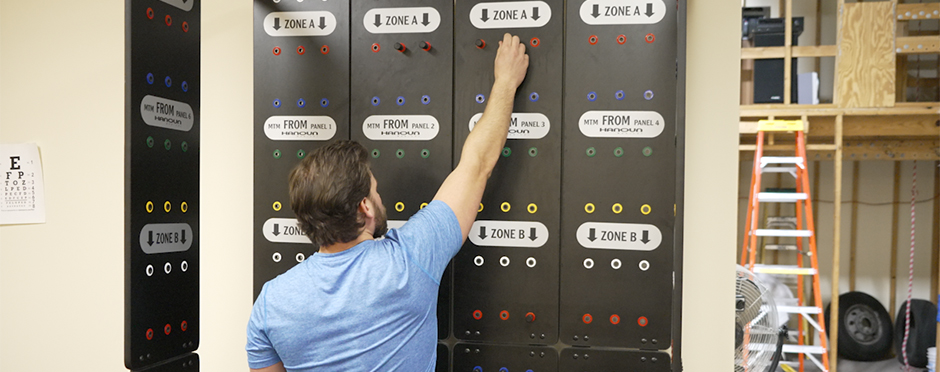
On The Job: Here’s What Workers’ Compensation Physical Therapy Looks Like From Start To Finish
Leave a CommentInjuries happen, and when they do, our team is here to help injured workers get back to their regular work routine without limitations while preventing future injury. In this blog, we’ll take a closer look at the entire workers’ compensation process from start to finish and the important role of physical therapists throughout recovery.
Like general physical therapy, an injured worker who is referred to physical therapy would start with an initial evaluation. During this evaluation a skilled therapist assesses any impairments or deficits impacting strength, range of motion or mobility. As part of your evaluation, your therapist will go over some of your job-specific activities and demands that are standard for your line of work. These same types of movements and motions that are required for your role will be incorporated into your program as well as full body strengthening and cardio.
For those that have lifting restrictions, your therapist will perform a Functional Status Report every few weeks. These reports include lifting, pushing, and pulling tasks which measure how close you are to being able to perform required activities for your job. These regular reports are a great way to inform your nurse case manager and physician how you are progressing throughout treatment.
If you are someone that is post-surgical or have been out of work for an extended period of time, your therapist may suggest participation in a work conditioning program. A work conditioning program may last anywhere from 4.5-5 hours each day and is usually between 3-5x/week. Work conditioning is made to mimic what a typical workday would consist of for that patient. The patient starts with a cardio warm up and then moves into a core strengthening program. After the core workout, the patient moves into what is known as a circuit, which consist of different activities that are similar to what the patient does at work. When this circuit is complete, the patient will have alternating days of upper body or lower body exercises. After a short break, the patient will begin a second bout of cardio followed by another circuit. At the end of the second circuit, the patient completes a stretching program. Similar to work comp physical therapy, during work conditioning there are functional status reports which take place to measure progress to reach lifting, pushing, and pulling goals for returning to full work duties without restrictions.
After work conditioning goals have been achieved, the patient will return to their physician for a formal discharge back to full work duties!
Choose Athletico
Physical therapists can offer a variety of solutions for preventing musculoskeletal disorders in the workplace keeping employees both safe and productive. We’ve built proven programs that reduce cost, promote wellness, treat on-the-job injuries when they occur and return workers to their jobs with minimal risk for future injuries. To learn more about how we can help design safer workplaces, visit our Workers’ Compensation webpage.
The Athletico blog is an educational resource written by Athletico employees. Athletico bloggers are licensed professionals who abide by the code of ethics outlined by their respective professional associations. The content published in blog posts represents the opinion of the individual author based on their expertise and experience. The content provided in this blog is for informational purposes only, does not constitute medical advice and should not be relied on for making personal health decisions.
